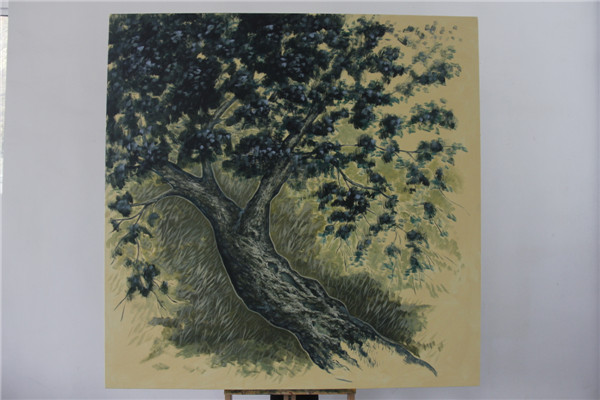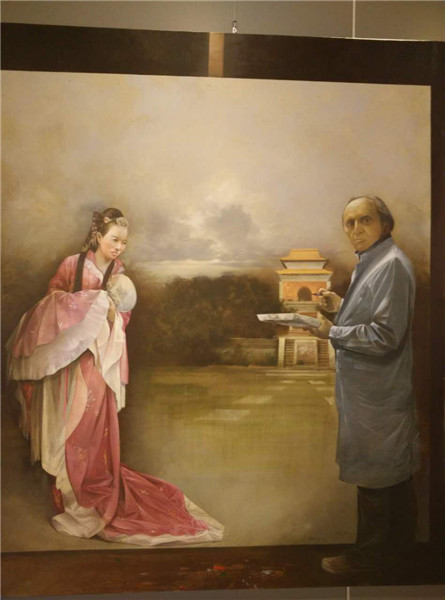
The Tree by Domenico Monteforte. [Photo provided to China Daily]
Artists from Tuscany in Italy have used brushes, colors and even a shuttlecock to portray their impressions of China.
The exhibition, New Ways of Seeing, at the Shaw Hall of Nanjing University in Nanjing, Jiangsu province, will display their work.
At the event, which runs from Friday through Nov 30, seven artists will showcase their creations based on a month-long stay at the Fangshan Art Zone of Nanjing.
The artists represent the full spectrum of Italian art, from landscape to abstract, but none of them has been to China before.
During their stay in Nanjing, they were introduced to traditional Chinese culture and the arts, says Zhou Xian, co-curator of the exhibition and dean of Art Institute of Nanjing University.
This year marks the 45th anniversary of diplomatic relations between China and Italy and 35 years of the sister-city ties between Nanjing and Florence, the capital of Tuscany and birthplace of the Renaissance.
Art Institute of Nanjing University and the local municipal authorities jointly hosted the Jinling-Artist-in-Residence Program aiming to enhance artistic and cultural exchanges between China and Italy.
Among the works is a combination of Western and Chinese elements in Painting and Model by Agostino Cancogni.
The artist put himself in the painting in which he draws a Chinese woman standing in front of a painting of a temple.
While the woman's clothes and the temple represent typical Chinese elements, his presence in the painting represents his stay in China, says Cancogni.

Painting and Model by Agostino Cancogni. [Photo provided to China Daily]
Federico Gori was inspired by a poem-The Green Mountain Perch by the Tang Dynasty (AD 618-907) poet Li Bai. He engraved typical Chinese mountains on his copper pieces and is waiting for natural oxidation to work its magic on the metal.
Andrea Baldini, co-curator and senior researcher at the university, says: "Nanjing, with less Western influence than Shanghai, is profoundly Chinese. Here, you can get a firsthand impression of what China is."
Domenico Monteforte says the artists have met "two Chinas" on their trip. "One is projected in the future in a technological way, the other is looking backward at ancient times."
He also notes that China is rich in color.
Macello Bertini, who made red the dominant color in his landscape paintings, says: "It's the traditional Chinese color."
In Sky Above Nanjing, Francesco Barbieri uses black and white, like he is creating a Chinese ink painting, to explore a clash in Chinese cities.
Skyscrapers, antennas and a temple tower dot the city's skyline, and high-speed trains take up the center of the composition, creating a kind of dynamic tension.
Separately, Monteforte feels black and white are also the colors of contemporary China.
"They are the colors of steel, concrete and smartphones."
He gave up bright colors for a more Chinese approach in his work, The Tree, which has a lot of empty parts and simple coloring.
Francesca Banchelli says her experience in China has changed her art.
"For instance, I was more into abstract painting. But once here, I felt the need to describe what was going on around me. I have to go back to the figurative. I need to change a lot and do it naturally."
She depicted the complexity of today's China with a mountain, birds and people playing cards at a bar in her work, A Man with the Mountain.
She also used a jianzi, or a shuttlecock, for her creation. Attracted by its color at a supermarket in the old town, she bought it and used it to paint with.





